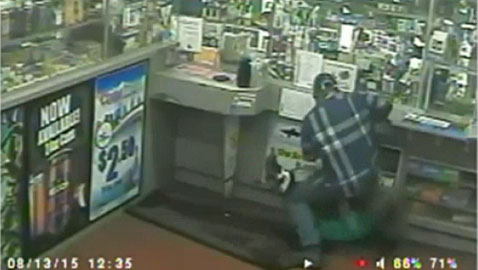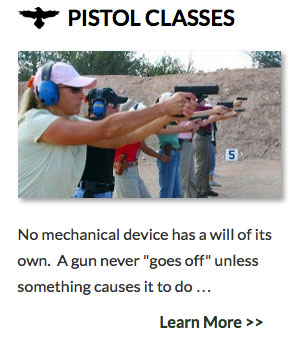Widgetized Section
Go to Admin » Appearance » Widgets » and move Gabfire Widget: Social into that MastheadOverlay zone
A failure Of Situation Awareness Is The Foundation For Disaster

I have noted an interesting series of posts boiling up in Ye Old Gun World regarding this incident in West Philly where a concealed carry holder was relieved of his gun and had it used against him. Lots and lots of words have been poured out by people with a lot of knowledge… I suggest you read some of the analyses and draw your own points.
On THE BEST DEFENSE we have developed over the years a set of “doctrine points” for lack of better words that we are constantly testing and resetting in simulation and as compared to Real World incidences. We believe that doctrine much be constantly challenged… this is important to us because we produce television programming that our viewers, if they ever use it, it will be at the worst moment of their lives. That responsibility weights on all of us.
So what points of that doctrine applies here?
• A failure of situation awareness is the foundation for disaster. Can you maintain full situational awareness all the time? Of course not… this is a point I deal with extensively in TRAIL SAFE. The “point man” burns out quickly. Everyone can — and will — be surprised; however, and this is a really big however, our goal should to to minimize those surprises. The Cooper color code has, at least in some circles, fallen into disrepute, but I believe it remains an amazingly useful tool for training people how to think.
Without going into a long dissertation, if we accept that we can maintain 100% awareness all the time, then we need to train ourselves to raise and lower our awareness level depending on where we are, how we are, etc.. Can we still get surprised? Sure, but we will be surprised a lot less than someone who spends their life in Condition White, gun or not. Your goal is to internalize when you need to move to DefCon 1, then strive to accomplish that every single time.
• On a more micro scale, as opposed to the macro response above, letting strangers close with you, especially within “intimate” distances, is in these grim times potential suicide. Realistically, can you stop every incidence of having your personal space invaded? Of course not…but you’d be surprised at how many such incidences you can avoid. When I first began hanging out with Special Forces guys back in the early 1980s, I got crash lessons in positioning one’s self in a room, how to stand in a line, where you need to be in a crowd, how to challenge someone who is closing with with (“Can I help you?’ “Do you need something from me?” “Excuse me, but I’m standing here.” Or what I came to think of as “the dance,” the simple steps to keep moving away from anyone who is moving toward you in a non-threatening way (if it’s a threatening way, that’s a different set of responses)…all part of the day-to-day reality of being armed all the time.
Time to go back and read Col. Cooper’s PRINCIPLES OF PERSONAL DEFENSE, specifically Principle 2, Decisiveness:
When “the ball is opened”-when it becomes evident that you are faced with violent physical assault-your life depends upon your selecting a correct course of action and carrying it through without hesitation or deviation. There can be no shilly-shallying. There is not time. To ponder is quite possibly to perish.
Any of this starting to look familiar from THE BEST DEFENSE? Col. Cooper notes that the specific course of action within certain parameters is actually secondary to the vigor with which that action is taken (which leads to Principle 3, BTW, Aggressiveness). When you’re in the soup, you’re in the soup…this is not a time to say, “Huh??? I wonder what I should do?” When you put on the gun, you must have already worked through this decision tree!
Another point I covered in TRAIL SAFE that has seen great use in THE BEST DEFENSE is the concept of “lag time,” the time between the initiation of the event and your response to it. In a shooting competition you might think that you draw your gun the very millisecond the buzzer goes off, but you don’t. There is always lag time, some of it physically built into your nervous system.
In high-risk sports we were fond of saying that lag time decided who lived and who died… the longer it takes for you to initiate your response to an unfolding event, the less likely it is that your response works. Why? Because unfolding events are fluid; they are changing even as you respond to them. Your initial response is, therefore, to the initial event that has already changed.
An example — in a cave dive in Florida I once smacked my regulator against the rock wall of the cave. The regulator busted and started “free-flowing,” venting air. Hmmmmmm… what to do what to do what to do? Think of how much air I would have lost if I had been thinking that way… the event is on-going. The broken regular continues to spew air, air that I might need to get out of the cave. Instead, I did what I trained to do —shut off the air flowing to broken regulator from tank A, change the manifold over to tank B, access the spare regulator attached to tank B ( remember “2 is 1; 1 is none?”).
Which brings us to training, specifically in combatives. Here’s an interesting point I’ve mentioned on the podcast — the most criticism I ever get on THE BEST DEFENSE is about our decision to routinely show combatives, e.g. empty hand, stick, knife, even using the gun as a striking weapon. I have received a lot of email/personal responses that essentially boil down to, “I’m carrying a gun; that’s what I’m going to use to solve the problem.”
The problem with that statement is there is often more than one “problem” in a violent attack. My thinking on this came from the earliest days of SHOOTING GALLERY when we begin filming defense against violent attacks in what we termed “the hot zone,” inside of an arms” reach. In talking to masters like Ralph Mroz and, of course, Michael Janich, it quickly became apparent that there was not a simple “draw gun; go bang” solution. There were, at the very least, 2 problems — stop the initial attack; access the primary weapon.
As we’ve moved from SG into THE BEST DEFENSE, we demonstrate the multiple level of problems (stop attack; retain gun; access primary weapon).
It’s easy to Monday morning quarterback an event… I say this as someone who done such on quite literally hundreds of events. Interestingly enough, each one brings me back to the importance of understanding my own state of awareness. I have drills that I wrote about in TRAIL SAFE, and I pretty routinely run those drills myself.



 MidwayUSA
MidwayUSA Ruger Firearms
Ruger Firearms SCCY Firearms
SCCY Firearms Streamlight
Streamlight Action Targets
Action Targets Gunsite Academy
Gunsite Academy
You must be logged in to post a comment Login